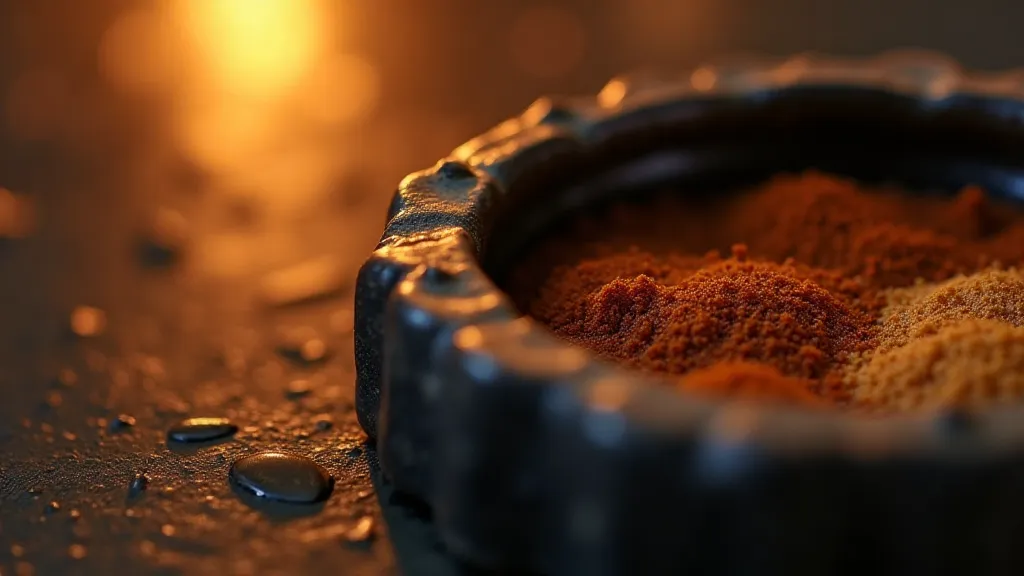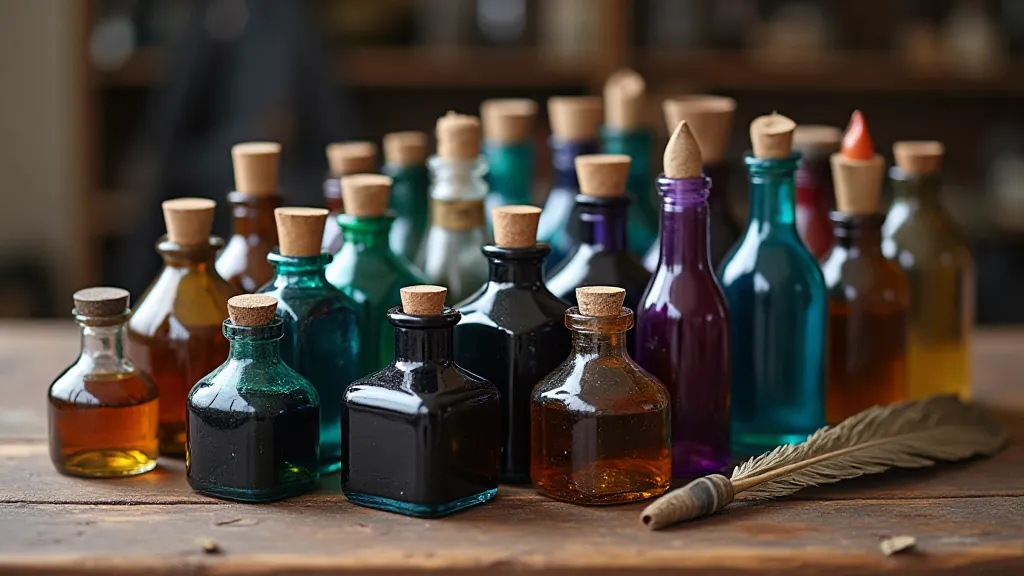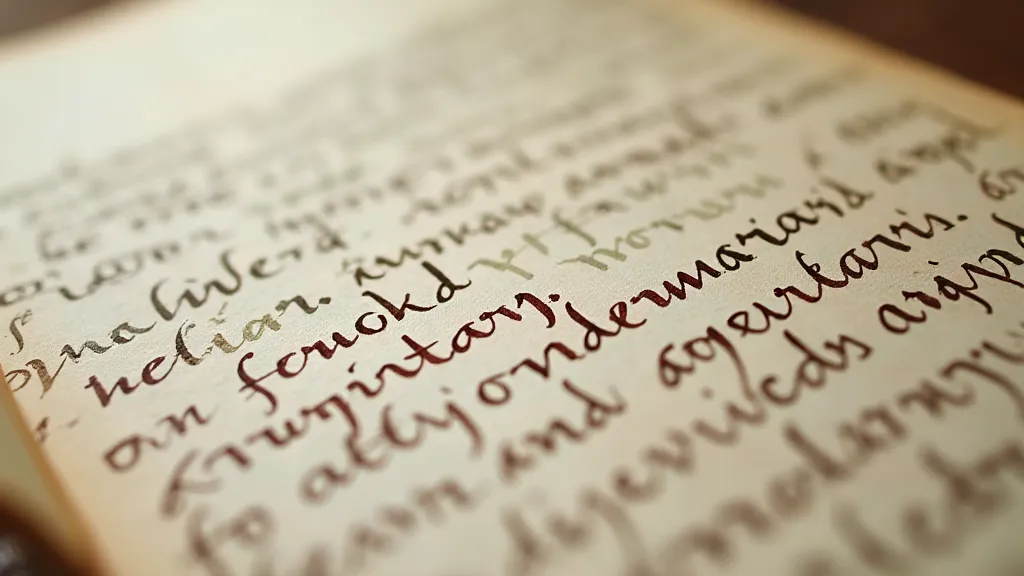Ink's Alchemy: Understanding the Chemistry of Vintage Inks
There's a certain magic that clings to antique pens. They’re more than just writing instruments; they’re portals to another time, silent witnesses to history’s unfolding. But what truly elevates the experience, what imbues these pens with a depth of character, isn't just the craftsmanship of the pen itself, but the ink that flowed within them. Vintage inks aren't mere coloring agents; they're complex chemical compositions, reflecting the scientific understanding and artistic sensibilities of their era. Understanding their “alchemy” unlocks a deeper appreciation for these remarkable objects.
My fascination with vintage inks began, ironically, not with pens, but with a faded letter my grandmother passed down. The ink, a dusky violet, held an unexpected richness, a depth of color that contemporary inks seemed to lack. It was a visceral connection to her, to her world, and it sparked a curiosity that’s only deepened over the years. It made me realize that the ink wasn’t just *recording* history, it was *part* of it.
The Foundation: Pigments and Their Stories
Let's start with the heart of the matter: the pigment. Early inks primarily relied on natural pigments sourced from the earth, plants, and even insects. Iron gall ink, arguably the most historically significant, was crafted from iron salts, tannins (extracted from oak galls – growths on oak trees caused by wasps), and gum arabic (a natural binder). The process was surprisingly simple, yet the resulting ink was incredibly durable and archival. Imagine the countless treaties, declarations, and personal letters penned with this resilient formula! The transformation of these raw materials into a writing medium is a fascinating process—a true blend of art and rudimentary chemistry, much like the process of turning raw materials into narrative that we explore in Quill & Crucible: The Alchemical Transformation of Ink into Narrative.

Other natural pigments offered a spectrum of colors. Sepia, derived from cuttlefish ink, produced a warm, brown tone popular for its permanence. Logwood, from the heartwood of the logwood tree, yielded rich purples and reds, highly prized but often expensive. Indigo, extracted from the indigo plant, provided vibrant blues. These pigments, unlike many of today's synthetic options, weren't always perfectly consistent; batch variations and subtle shifts in color were simply part of the charm. The effect of these pigment choices on the overall character of a piece of writing is undeniable; it's more than just color—it's a reflection of the era’s aesthetics and the writer’s intentions.
Binders and Additives: The Unseen Architects
Pigments alone won’t write. They need a binder to adhere them to the paper, and additives to control flow, drying time, and overall characteristics. Gum arabic, mentioned earlier, was the workhorse binder for many centuries. It’s a natural polysaccharide, derived from acacia trees, that provides excellent adhesion and gloss. Later, shellac, a resin secreted by the lac insect, entered the mix, contributing to a faster-drying ink.
Additives were just as crucial. Honey was sometimes added to improve flow and reduce feathering (the tendency for ink to bleed into the paper). Vinegar (acetic acid) acted as a preservative and could also influence the ink's pH. The addition of even seemingly minor ingredients could dramatically affect the writing experience. And, of course, manufacturers often guarded their exact formulations as closely as they guarded their pen designs.
The Rise of Synthetic Inks: A New Palette and New Challenges
The 19th century brought a revolution in ink production: the introduction of synthetic organic pigments. Aniline dyes, derived from coal tar, opened up a dazzling array of vibrant colors – bright greens, brilliant reds, intense blues – that were previously unavailable. This era witnessed a burst of creativity, with manufacturers experimenting with new formulations and marketing inks for specific purposes, from elegant calligraphy to durable business correspondence. The evolution of pen design mirrored this shift in materials and aesthetics; a period of incredible change, documented in detail in From Fountain to Fine Point: Reimagining Pen Design in the Digital Age.

However, the advent of synthetic inks also presented new challenges. Many of these early synthetic formulations proved to be less archival than traditional iron gall ink. They could fade, bleed, or even corrode the pen nib over time, particularly if not properly stored. The quest for brighter, more vibrant colors often came at the expense of longevity.
Understanding the Signs of Age: A Collector’s Perspective
For those interested in collecting or restoring vintage pens, understanding the characteristics of vintage inks is invaluable. Ink residue within a pen can provide clues about its age and use. The presence of iron gall ink, for example, can indicate a pen dating back to the 18th or 19th century. However, the residue might be obscured or altered by subsequent cleaning or use with different inks.
Ink staining on paper itself is another significant indicator. The color and texture of the stain can suggest the type of ink used. Older inks often exhibit a subtle sheen or a slight mottling, a testament to their complex formulation and the imperfections inherent in natural pigments.
Furthermore, the smell of vintage ink, if detectable, can be surprisingly evocative. Iron gall ink often possesses a slightly metallic or earthy aroma. Others might carry the fragrance of honey or vinegar, depending on the additives used.
The Enduring Legacy: More Than Just a Color
Vintage inks are more than just coloring agents; they’re windows into the past, tangible connections to the individuals who penned important documents, personal letters, and works of art. They represent a fascinating intersection of science, art, and craftsmanship. Examining their chemical makeup enhances our appreciation for the pens that carried them and for the enduring power of the written word. The way a writer’s hand moves across paper, guided by the ink’s flow, creates a unique intimacy—a bond between the writer and the words themselves, as discussed further in The Script's Embrace: How Pens Shape the Writer’s Intimacy with Words.

The next time you hold a vintage pen, take a moment to consider the ink that flowed within it. Imagine the hands that guided it, the stories it recorded, and the chemical alchemy that brought it to life. You might be surprised by what you discover. Further exploring the chemistry of ink and its cultural impact is an ongoing journey, and we invite you to delve deeper into these fascinating topics.
Beyond the chemical composition, the practical application of these inks shaped writing styles and even influenced communication etiquette. The permanence of iron gall ink, for example, encouraged more deliberate and considered writing, knowing that the words would endure for generations. Synthetic inks, with their vibrant colors, fostered a spirit of experimentation and allowed for greater artistic expression. The evolution of these inks is a reflection of our changing world, and their legacy continues to inspire us today.
The fragility of some vintage inks also presents a challenge for preservationists. Careful storage and handling are essential to prevent fading, bleeding, and other forms of degradation. Museums and libraries around the world employ specialized techniques to conserve these precious artifacts, ensuring that they remain accessible to future generations. These preservation methods represent another fascinating layer of the ink's story, blending scientific expertise with a deep appreciation for history.
Finally, the study of vintage inks offers a unique opportunity to connect with the past on a personal level. By examining the chemical composition of an ink, we can gain insights into the lives and experiences of those who used it. It's a tangible link to a bygone era, a reminder that even the simplest of objects can hold a wealth of historical significance.





